
Marcel Gnauk: Free To Use Sounds
Greg Simmons talks to the prolific Marcel Gnauk, co-founder of Free To Use Sounds. With no background in audio, Marcel started recording sounds and giving them away on the internet. Now he makes a living from it.
It was less than two years ago when the name ‘Marcel Gnauk’ started popping up on numerous audio-related groups on social media, offering free sounds for people to download and use. Coming out of nowhere, he quickly became a regular; posting daily updates of his sound recording adventures and offering entirely new libraries of free-to-use sounds almost every week. Through clever and consistent internet marketing, his website – freetousesounds.com – now gets over 30,000 page views per month, and is one of the first that comes up in Google searches for free sounds. It also supports his lifestyle of continual travelling and recording. In this interview, Marcel talks about how he got started, how he took freetousesounds.com to the forefront of Google searches – and people’s minds – in less than two years, and how he makes a living from giving sounds away.
STARTING OUT: FOR THE LOVE
Greg Simmons: How did you get started doing sound recordings?
Marcel Gnauk: In 2017 I was in Cambodia with Libby — my partner — and we were working on a video for an NGO [Non Government Organisation]. We’d filmed some birds flying and Libby said, “we should add some bird sounds”, so we looked on the internet but couldn’t find anything suitable that fitted our meagre budget. Then we went to Youtube and discovered several videos of a pigeon flapping. We couldn’t believe how many people were searching for and viewing these videos! While most of the sounds were low quality and unusable, they were still free. Not being able to access quality sounds free of charge was what sparked our interest in recording our own sounds.
Back then we only had a Zoom H1 recorder. I went out on the streets of Siem Reap with the H1 and saw some women working on a construction site; they were shovelling gravel into trays and shaking it around to clean it, making a sound like ‘Phor! Chh chh chh…’ So I turned on the Zoom, put on my iPhone earbuds, and at that moment I heard the women working, of course, but I also heard everything around me: the cars honking, ‘meep meep’, and ‘vroom’ as they went past, all these thousands of sounds that just hit me. It was the first time I’d ever focused on sound like that, and it was so amazing that I wanted to record more stuff! I was hooked. I ending up walking around Siem Reap recording things until my battery died. When I came back home and played the sounds to Libby, she said “That gravel sound is cool! Let’s put it on YouTube.”
After Cambodia we travelled to Portugal and Germany, and I bought the Zoom H6. The first recording I used it for was capturing high-speed traffic on the Autobahn. We added some video footage, uploaded the sound to YouTube and shared it on Reddit. There were so many clicks, views, and comments; that’s when we decided to create the website freetousesounds.com.
GS: What sort of sounds do you put on freetousesounds.com?
MG: I record almost everything that makes a sound. I love recording industrial sounds, people, crowds, anything. At the moment I’m on a road trip through Vietnam and I’ve been recording rainforests, markets, restaurants, doors, showers, faucets…
I look at things and I see sound! That’s what I love doing.
I also record a lot of sounds we can’t normally hear – I record underwater sounds with hydrophones, and I record with contact microphones mounted onto things that move, vibrate or can be struck. I also record electromagnetic fields.
GS: Electromagnetic fields? Who uses them?
MG: They’re mostly used by electronic music makers and sound designers.
GS: How do you capture those?
MG: It’s a special type of antenna called a Priezor, made by LOM. The company is based in Slovakia and they make some very interesting and specialised microphones and accessories.

CAPTURE KIT
GS: That sounds like a cue to ask about your recording gear. Tell me what you’re using.
MG: From the Zoom H1 I upgraded to the Zoom H6 so I could connect other microphones. Then I got a Rode NT4G+, a Rycote Blimp and a matched pair of DPA 4060s. I’m super happy with the 4060s and think they’re one of the best choices for field recording. They’re so small, so discrete, and you can record anything with them: ocean sounds, people, traffic, etc. I can use that one pair of tiny microphones to record hundreds of different things that I might not be able to record with many other types of microphones. I use them with Rycote’s lavalier windjammers, which work really well.
GS: And then what?
MG: My website was starting to do very well, so I reached out to Zoom in the USA. I knew they had the Zoom Creator program, and they sold me a Zoom F4 at the Creator program price. Then I got the Usi Pros, the Mikro Usi Pros and the Priezor, all from LOM.
GS: LOM is a brand that most readers would not have heard of, but they are highly rated by their users.
MG: LOM is run by Jonas Gruska, and what he does for the sound community is incredible. He manufactures microphones in his hometown, choosing local circuit board manufacturers and local connector distributors, and he tries to have a positive impact on the environment.
The Usi series – which I love to use – are very small and discrete microphones. The Usi Pros are about 2cm long, not as small as DPA’s 4060 but small enough and very well made. They’re specifically designed for recording very quiet sounds; I find they’re quieter than the DPAs, however, you can’t really record loud sounds or they will distort. For recording quiet ambiences the Usi Pros are a better choice for me than the DPAs, but for louder sounds I use the DPAs. They sound very similar, but the Usi Pros are only 125 Euros [~A$200] for a pair compared to about 850 Euros [~A$1350] for the DPAs! The Mikro Usi Pros are smaller than the Usi Pros but still a bit bigger than the DPAs.
GS: DPA’s 4060s and Lom’s Usi Pros are all omnis. Do have a preferred spacing for them?
MG: Not really. I have a stereo bar and stand I use, but I also like handholding them and adjusting the space between them to suit the recording and what I’m hearing. They’re all very small and light, including their cables, so it’s not a problem holding them apart for the duration of a recording. That approach allows me to move around a bit if I need to follow some action; it also saves me the extra weight of carrying a stand and stereo bar, and the time needed to set it up. I do it all the time with the Usi Pros because they’re long enough to hold comfortably between the fingers. With the recorder and mics in a small bag, I can pull out the mics and headphones and be ready to record very quickly.
Sometimes I mount the mics on other things. For example, I recorded all day today with the Mikro Usi Pros inside Bubblebee windjammers mounted on the top corners of my LowePro ProTactic daypack. Stealth recording in Hanoi!
GS: Cool stealth trick! What came after the Zoom F4 and the LOM gear?
MG: Last year I connected with the Zoom distributor in Europe and got the brand new Zoom F8n. Then I added Limpet contact mics and hydrophones, and an AKG C411 contact microphone. I recently added the Zoom H3-VR Ambisonic recorder, so I can record in 360°.
I also have a pair of Soundman binaural mics, the OKM II Rock-Klassik Studio model — their flagship, which cost about 375 Euros [~A$600]. They’re great for doing stealth recordings in airports and places, because they look like you’re wearing ear buds.
GS: You’ve got a lot of Zoom stuff there…
MG: Yes, because I love Zoom products! I’ve been using their recorders from the beginning and they’ve never disappointed me.
EDIT MODE
GS: What about editing?
MG: I use Adobe Audition. I do very light editing, and I don’t process too much because I like to keep the sounds as original as I can. I edit out all the unwanted things. Sometimes I use a filter or a little bit of compression or de-noising. The de-noiser is a plug-in from Waves called NS1, it’s really nifty because it has just one slider! I do all of my monitoring through a pair of Sony MDR7506 headphones; they’re an industry standard, and good for the price.
GS: There are thousands of sounds on your website and you’re continually adding more, so I assume you have developed a very fast workflow?
MG: My workflow is pretty intense, but I love it! I tend to record every day, load the sounds into my laptop and do the editing wherever I’m staying.
The real work starts when I feel I have enough sounds to create a library. Nowadays, I put a lot of effort into metadata descriptions; finding the right keywords that people can use with SoundMiner, Soundly, BaseHead or any program with search functions.
After the sounds are edited and metadata has been added, I upload them to Bandcamp. Then I make a compilation of all the sounds in that library, and that goes to YouTube and Soundcloud so that people can get an overview of the sounds in that library.
Finally, I create a blog post for the website; that means I have to do some research, write something about the recording and choose photos to go with it. When all of that is ready to go, I publish the library and begin the marketing. For every post or new set of uploads, I share about it on Facebook, Reddit, Twitter and Instagram, and also send out a newsletter.
GS: It sounds like you spend more time doing administrative and marketing stuff than audio stuff!
MG: Of course, because that’s the most important thing! Many people don’t understand that [adopts movie preview voice] “the world turns, the world has turned” [laughs].
I could be out there for 15 hours a day recording sounds and spend one hour per day on administration and marketing, but then nobody would ever find my sounds online.
You have to put the time into marketing if you want people to find you.
![16 LOM Usi Pro mics IMG_2671_[PRINT]](https://www.audiotechnology.com/wp-content/uploads/2019/10/16-LOM-Usi-Pro-mics-IMG_2671_PRINT.jpg)
WEB WHISPERING
GS: Right! That brings us to one of the main reasons why I wanted to interview you. Less than two years ago you followed a newfound passion: recording sounds. You made a website and started giving your sounds away, and now those sounds are funding your travelling lifestyle and enabling you to record more sounds to give away. How did you make that work?
MG: To be honest, I never anticipated such support from the sound community. It seems that I offer something that people have been wanting and have been looking for. Yes, I provide free high-quality sounds but the sound community knows value when they see it and they have continued to give back by purchasing the premium libraries.
GS: So you have free sounds and libraries that people can buy? What’s the difference?
MG: On the website, I have high-quality sounds that have blog posts; those are free and can be downloaded through Bandcamp. Then there are the premium libraries that can be purchased and downloaded from my cloud storage. Right now I have the Complete Library, the Pro Edited library, the new VR Ambisonic Library, and the All-In-One bundle (which includes all the libraries). The Complete Library contains all of the sounds I have ever recorded, pre-edited by me. The Pro Edited Library contains sounds that have been edited and processed by other sound libraries I work with, so they’re usually ready-to-use for professionals. The VR Library contains all the recordings I have done so far with the Zoom H3-VR Ambisonic recorder.
GS: Right about now I can imagine the more cynical readers thinking “So that’s how he does it… I bet those premium libraries are expensive!”
MG: No, they are not expensive, that was never the intention. You can buy any of those libraries for a price between US$5 and US$15. Also, all of the premium libraries can be accessed from my Sync cloud, 24 hours per day with unlimited downloads, and when someone buys a library they have access to the new sounds I add to that library in the future.
USE CASE
GS: Are there any sound quality differences between the free sounds and the libraries?
MG: No, they are all the same source files; 24-bit wavs with 96k or 192k sampling rates, the highest quality I can provide.
GS: So what are people getting when they pay for a premium library compared to downloading the free sounds?
MG: Apart from what I’ve already described about the Pro Edited Library, the difference between the premium libraries and the free sounds is that there is no attribution or credits required for using sounds from the premium libraries, whereas the free sounds require attribution in the form of a link or credit to my website. If you are using the premium libraries, you don’t have to add any credits; you can even use the sounds to create your own sound libraries.
GS: Nice! Earlier you mentioned that the Pro Edited Library contains sounds that have been worked on by other sound libraries who are working with your sounds…
MG: Yes. I have non-exclusive deals with a few different sound libraries; they buy the sounds from me, add value by spending time making them more suitable for their customers’ needs, and sell them. They also pass them back to me and I put them in the Pro Edited Library.
SPECIAL SOURCE
GS: Speaking of other sound libraries, is there anything that makes freetousesounds.com different or unique?
MG: I believe our sound website is unique because it is based on blog posts. All of the recordings are captured by me and have a story behind them. As we’ve been travelling the world we’ve been able to discover sounds and catalogue them for everyone. To the best of my knowledge, I don’t think there is another sound website that provides such a variety of field recordings all made by the same sound recordist who travels full-time around the world capturing sounds.
GS: And because it’s based on blog posts you can share the stories about each new sound library on social media?
MG: Of course. I love sharing the stories behind the sounds! That way people can get a feeling for where I am and how I recorded the sounds there. Through social media, I’ve also been able to connect with other sound enthusiasts while I’ve been travelling.
GS: Who uses your sounds?
MG: The list of users includes filmmakers, music makers, sound designers, games developers, podcasters, YouTubers, app developers, and other sound libraries.
CAREER ADVICE
GS: What advice do you have for people who read this interview and think “Wow, I want to do what Marcel does! I want to travel the world and support myself by selling sounds!”
MG: I’d say don’t worry about your past or your experience. I started with zero knowledge about sound, and now I’m supporting myself from it. So start where you are and follow where your interest and excitement takes you. The best piece of advice I can give is don’t compare yourself to others, and be laser-focused on what you’re doing.
GS: Thanks for your time and information, Marcel. Hopefully we’ll bump into each other during our travels and I’ll buy you a coffee…
MG: Depending on where we meet, buying me a coffee might be more expensive than buying one of my premium sound libraries!












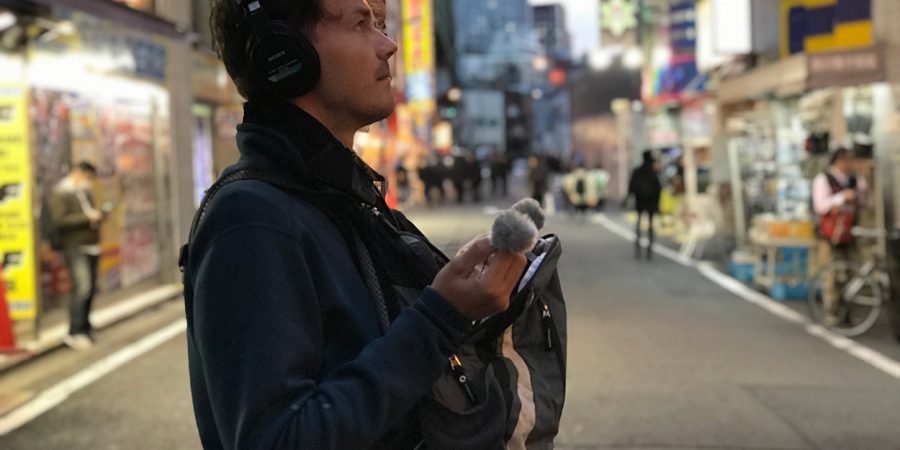
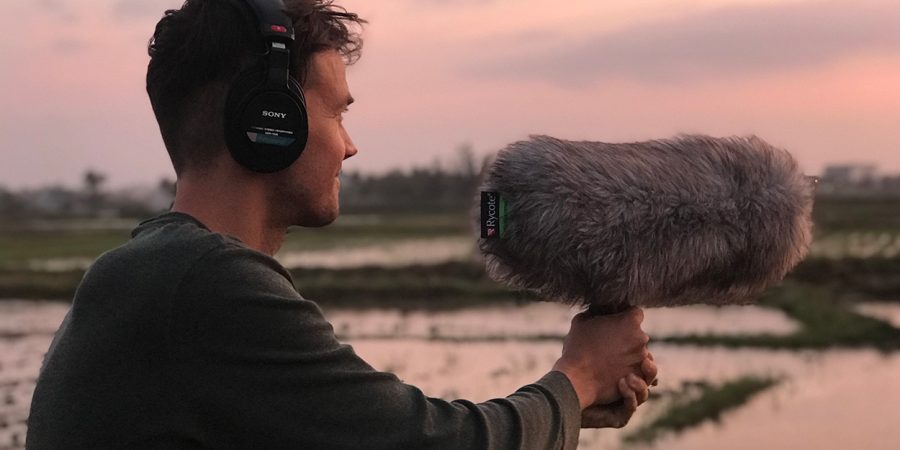
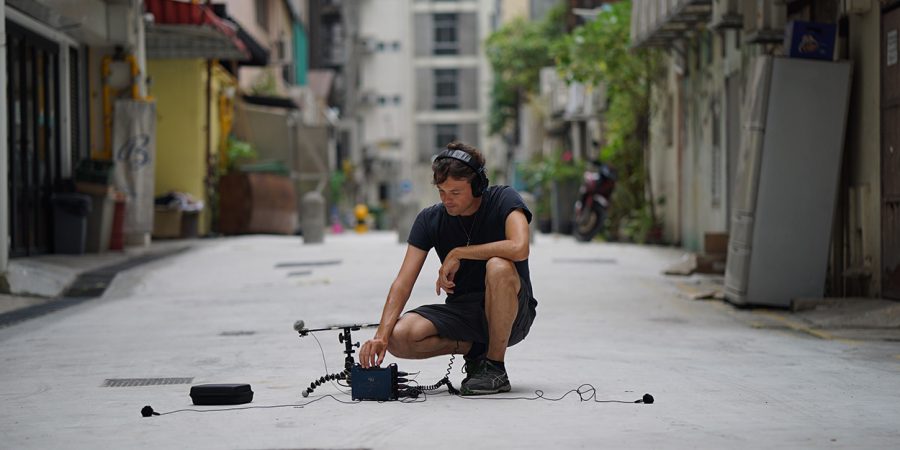
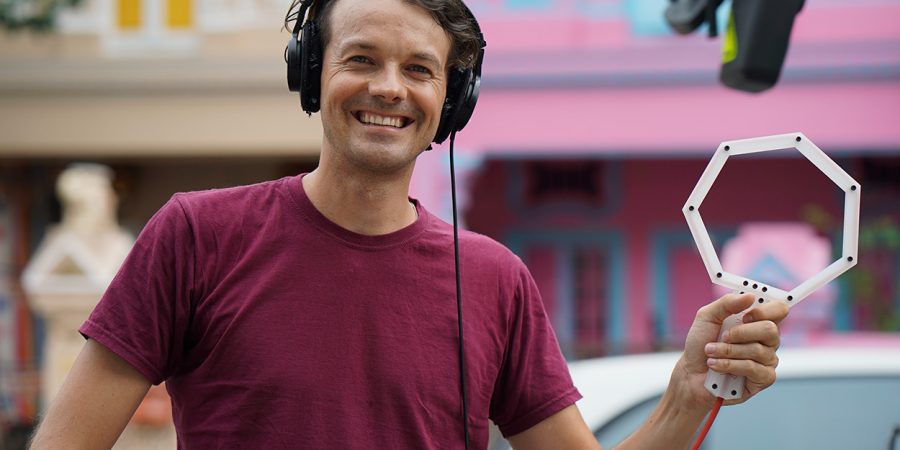
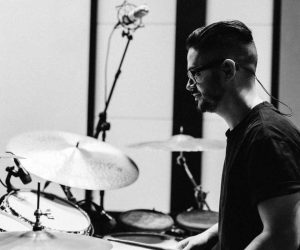





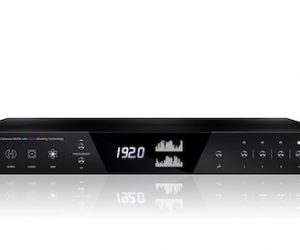
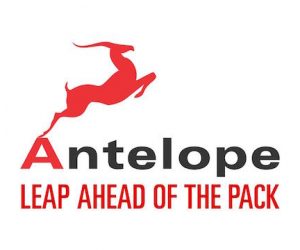


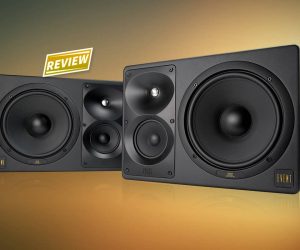



A dream of mine
A dream for many!